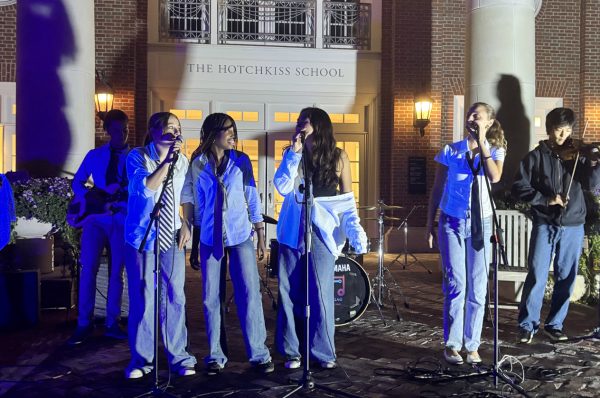Sixty-four Students Embrace Remote Learning
When walking through the Humanities wing, don’t be alarmed to see an owl-like robot sitting in the middle of the classrooms.
With the school year well underway, most students are attending in-person classes and resuming co-curriculars on the fields and in the MAC. However, a different reality confronts the 64 students who make up the Remote Learning Cohort (RLC).
Since the COVID-19 pandemic first took hold of the world, remote learning has become a necessity for many students. Like many other institutions, the school suspended in-person classes last spring to prevent the spread of the disease. Yet, even now that it has reopened its gates with strict anti-COVID-19 measures in place, returning to campus is not possible for many students. In an effort to ensure that all students can resume their studies, the school has implemented a remote-learning program that allows students to participate in classes, albeit in a different way. Mr. David Thompson, director of international programs, and Mrs. Jennifer Rinehart, instructor in environmental science, serve as the faculty coordinators of the RLC.
The school incorporated new technology to facilitate the hybrid learning environment. Canvas, Zoom, and a website dedicated to the RLC are used in conjunction. The Meeting Owl, a smart camera that allows a 360-degree view of the classroom and automatic focus on the speaker, is equipped in every classroom.
The majority of remote learners are based in East Asia. Due to time zone differences, synchronous classes often occur in the middle of the night for these students. For example, a typical class day for a student in Beijing would begin at 9 p.m. and end at 4 a.m. The remote-learning program offers flexibility to accommodate these students through Oxbridge-style asynchronous learning, which involves watching videos and studying independently. Mrs. Rinehart said, “We want to make sure everyone still gets a good night’s sleep.”
Being unable to attend classes synchronously comes with disadvantages. Ryan Eom ’21, a remote learner in South Korea, said, “For discussion-based classes like English and philosophy, watching recordings reduces the joy of studying these subjects.”
Remote students have also experienced difficulty with the new OWL technology. Bruce Lucana ’21, “Though the OWL technology allows us to form a hybrid structure, the technology definitely needs to be looked at more carefully and assessed in terms of how remote learning students can actually be engaged and participate in class. [The] OWL sometimes makes it hard to hear and see who is talking. It can cause some distractions not only to virtual students, but to students learning on campus as well.”
Noam Ginsparg ’22 echoed Lucana’s concerns. “The three days that I’ve been in class through the OWL haven’t been good at all. Voices sound muffled and distorted through the OWL’s onboard mic,” he said. “The video quality through the OWL looks like 360p, and I can’t really see writing on whiteboards. The audio and video issues means that discussion based classes are much more stressful than they otherwise would be.”
Another common complaint is that students feel disconnected from the wider school community. The faculty are cognizant of this concern. Mrs. Rinehart said, “Students are concerned about not being with their peers for regular class sessions. They are missing out on those tiny organic interactions that can shape your whole day. That’s why we are hosting games and events for the remote learning cohort. We want to create spaces for remote learners to build relationships, and have fun with everyone.”
In order to facilitate relationships and to keep remote students connected to one another, the school created a mentorship program; around 20 remote mentors run online sessions with mentees, some of whom are new students. The program allows students to voice their opinions and concerns to mentors, who retain direct lines of communication with Mr. Thompson and Mrs. Rinehart, and to have a space to bond with others in the community. Mr. Thompson said, “The most important thing is that students feel safe, seen and supported.”




